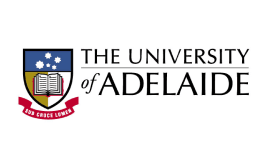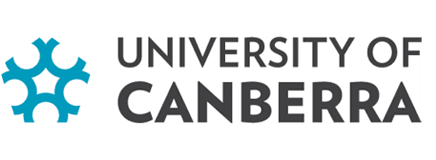Webinar: Findings from the third annual Biodiversity Concerns Survey

News story
16 April 2025
Welcome to this webinar where we discuss the findings of a survey of community attitudes to nature and its care. We also present research findings on how we can better engage people with nature and its conservation, and a summary of the webinar Q&A.
The Biodiversity Concerns survey is undertaken for the Biodiversity Council each year by a team of social scientists at Monash University's BehaviourWorks Australia with input from 4 other universities.
The findings help to guide our work and are also a resource for researchers, policy makers and nature advocates across the country. It has been great to see the strong interest in the findings in the media and with 430 people registering for the webinar in just a week.
Our webinar speakers and topics:
- Dr. Meghan Shaw, Monash University BehaviourWorks Australia presents results on how Australians connect with nature, the biodiversity issues they are concerned about, and the conservation actions they are taking.
- Lis Ashby, Biodiversity Council Policy and Innovation Lead, outlines findings on how nature will influence voting intentions in the upcoming election and which nature policies Australians support.
- Biodiversity Councillor Associate Professor Angela Dean, The University of Queensland, presents insights from her research on how we can better engage people with nature and its conservation.
The MC is Biodiversity Council Communication and Engagement Manager Jaana Dielenberg. Webinar technical production Biodiversity Council Communications Officer Liam Ferguson.
Q&A
Q. With so many places under threat, how might different interest groups give an appropriate message that doesn't distract from others but also too much from all could make people be compassion-fatigued?
Meghan Shaw: "Research shows the value in not only talking about the challenges conservation faces, but also the successes. Recently there has been a rise in "conservation optimism", such as sharing the positive stories of species saved from the brink of extinction, or destructive projects stopped in the final hour by community advocacy. These stories are just as important to tell, because they motivate. They give readers a sense of agency; that what they're doing is helping (or could help), and that biodiversity loss isn't a complete lost cause. The best motivational messages highlight collective wins (e.g. "because this community banded together, this tree was saved") and include clearly explained, doable actions that help people feel part of the solution (e.g. "on days above 30 degrees, you can put a shallow bowl of water out in your garden to save wildlife from dehydration")."
Q. How can we raise concern about water management reform given water is life and healthy wetlands and rivers underpin our wellbeing?
Angela Dean: "Water is generally one of the safest entry points for talking with a range of people about the environment. Those people who have lived through drought, rural people as well as urban people understand the importance of water, both domestic water supply and water for the environment. That can be a good entry point to talk about something. So when I'm engaging or thinking about a process to engage with a group I think about what's the shared value? What do they care about? And then the next step is how can I how can I start motivating action?One of the challenges with water can be that many people are very focused on plastic pollution, which can make it to motivate other actions for protecting waterways and marine areas. I'm not diminishing the value of getting rid of that as a source of pollution, but it can constrain people's thinking. If we want them to do something quite different, like engage in riparian restoration or something like that, we need to work with them to make that make sense and relevant for them. A second issue is that although restoration can bring a lot of social benefits, such as a greater presence of natural places, it can still introduce some limitations, such as reducing access in some points. So how do people think and view those trade offs about access? In one project we worked with a local council who wanted to restrict beach coastal access for shorebird protection, what we recommended was to create a new point of access to replace the lost one and emphasized continued access, but in a slightly shifted area, which seemed to work quite well. Our messages or information about engaging with people don't always apply in situations where there's a high level of conflict, for example some Murray-Darling basin issues, require much more intensive engagement."
Q. The Biodiversity Concerns survey found that many people say they care about nature and would act for nature, how confident we that will flow through to actual voting intentions?
Lis Ashby: "Of course surveys always have issues with voting intention. It's a bit rubbery and there's the proportion of people who haven't made their mind up a week out from the election, hence all these people on the campaign trails trying to get those people's vote based on more recent things and avoid gaffes and that kind of thing. We will have to look retrospectively after the election to really understand how that played out. What we would emphasise is that there's a whole lot of concern within the community, and there's a whole lot of care for the environment, and I think there's an opportunity to activate that, in different ways; whether it's people undertaking behaviours individually as Ange talked about, or whether that's something that goes to bigger political decisions."
Q. In terms of engaging people with concern and action for nature, in addition to the traditional older bushwalking types, how do younger active bush-users like four-wheel drivers and trail-bike riders fit in.
Angela Dean: "What we see is that actually a whole diverse range of nature users are motivated potentially to engage in protection. Studies looking at associations between nature use and stewardship show strong relationships. That nature use does not need to just be things like bush walking and bird watching, it can also include exercise, picnics with family, boating and extractive processes like fishing. So it's really important to realise a whole diverse range of types of nature user are motivated to potentially engage in stewardship. A lot of the research on more extractive or higher impact activities comes from the US. The demographics of people hunting in the US are a little bit different, but overall internationally the data says these groups are willing and interested in protecting nature. The challenge is how they present the issues they care about aren't always the same flavor as what we're used to communicating or seeing so it is important when developing communication products or engagement processes to use language that doesn't alienate that group or create an us and them type of situation. So for example, with dogs and shorebird, not painting dog walkers as bad, which is a risk if you start the conversation talking about the impact and reducing the impact. Instead you can say 'this is a special place for you, and we want to make a special place for everyone, and how can we broaden the specialness of this place that you enjoy and that others want to enjoy, and maybe our animals as well."how we chose to ask the questions we did in terms of the wording. Bob's, raised a very pertinent point, that in engaging the community with biodiversity issues, we often deal with a bit of a plant blindness everyone talks about wildlife and less about plants.
Q. We are aware there's a lot of concern for nature amongst a majority of people in the community, why are the major parties and key people campaigning this election not talking about the environment?
Lis Ashby: "I think they are deliberately not talking about it as neither major party has much to offer. In the 2022 election Labor came in strong making various commitments and they released a nature positive plan post election that said that we're going to do a whole lot of things, and in the main, they haven't lived up to those commitments, and they have actually taken action in the opposite direction based on vested interest groups, whether that's the WA mining lobby or the Tasmanian salmon farming companies. And that actually isn't a particularly good look, because it's not a well delivered policy outcome or something reflective of broader community concern. So we and some of the major environment groups are asking the major parties what their policy positions are."
Q. How do we use these results, the fact that there is concern to the environment to get to a situation where when we get to a disaster like a major bushfire, it's not all humans first and no concern for wildlife?
Jaana: "We can promote the idea that we do not need to chose between nature or humans, we can, as they say, walk and chew gum at the same time. We could have plans and strategies in place so that when disasters happen, we can respond appropriately for nature as well as other issues. Biodiversity Council member Professor John Woinarski at Charles Darwin University has given this a great deal of thought, and I recommend reading his studies on Social valuation of biodiversity relative to other types of assets at risk in wildfire and Making choices: prioritising the protection of biodiversity in wildfires.













